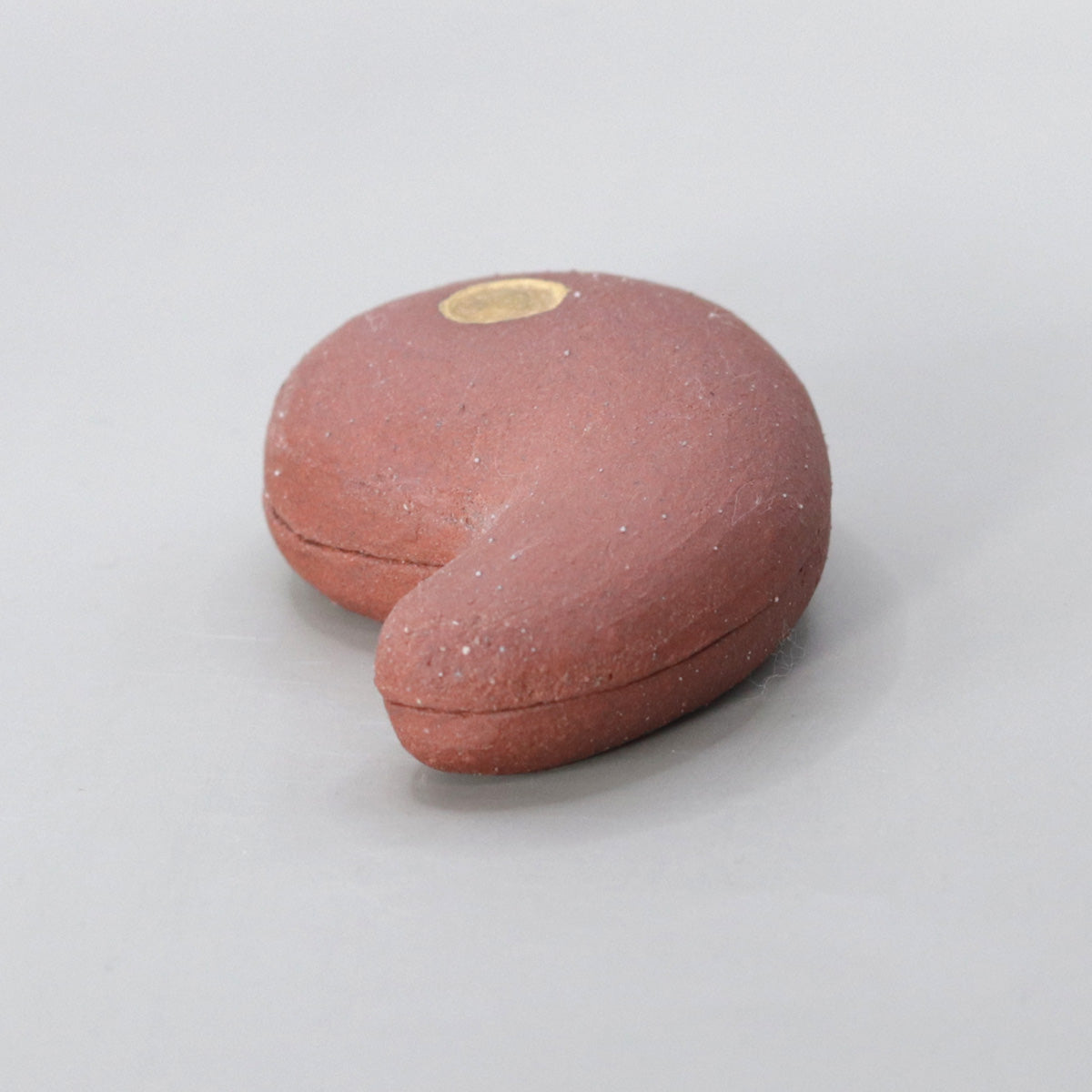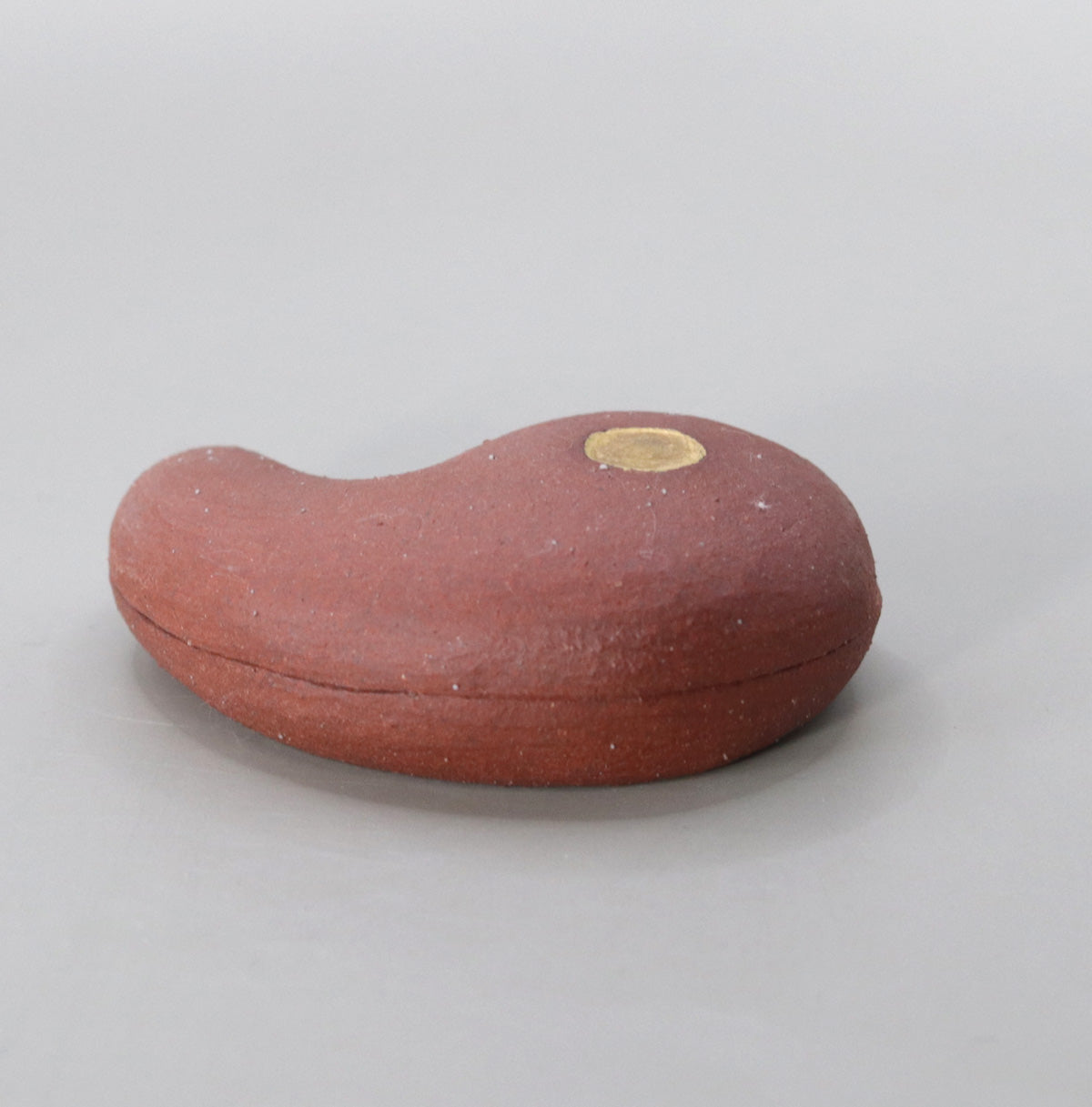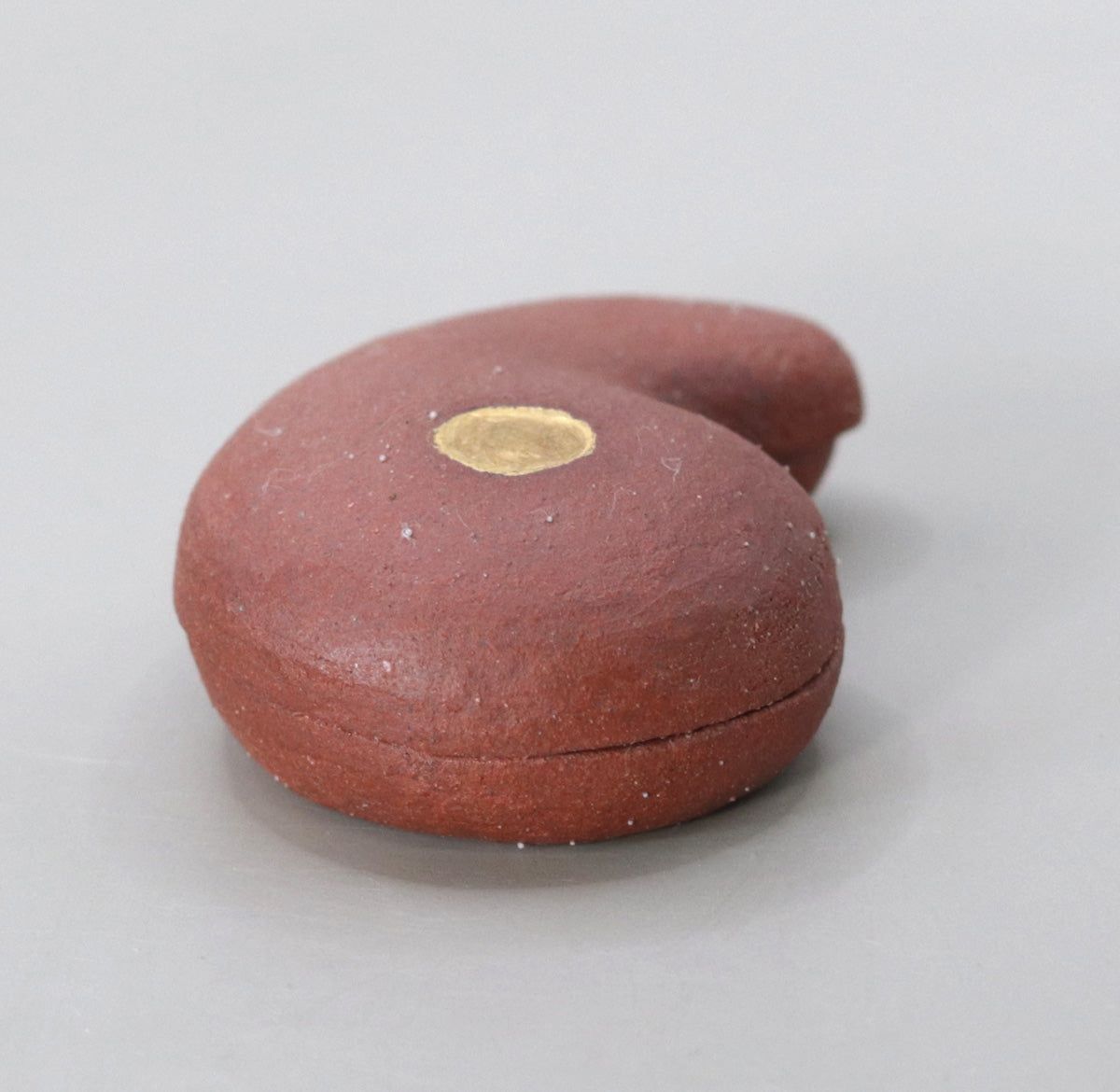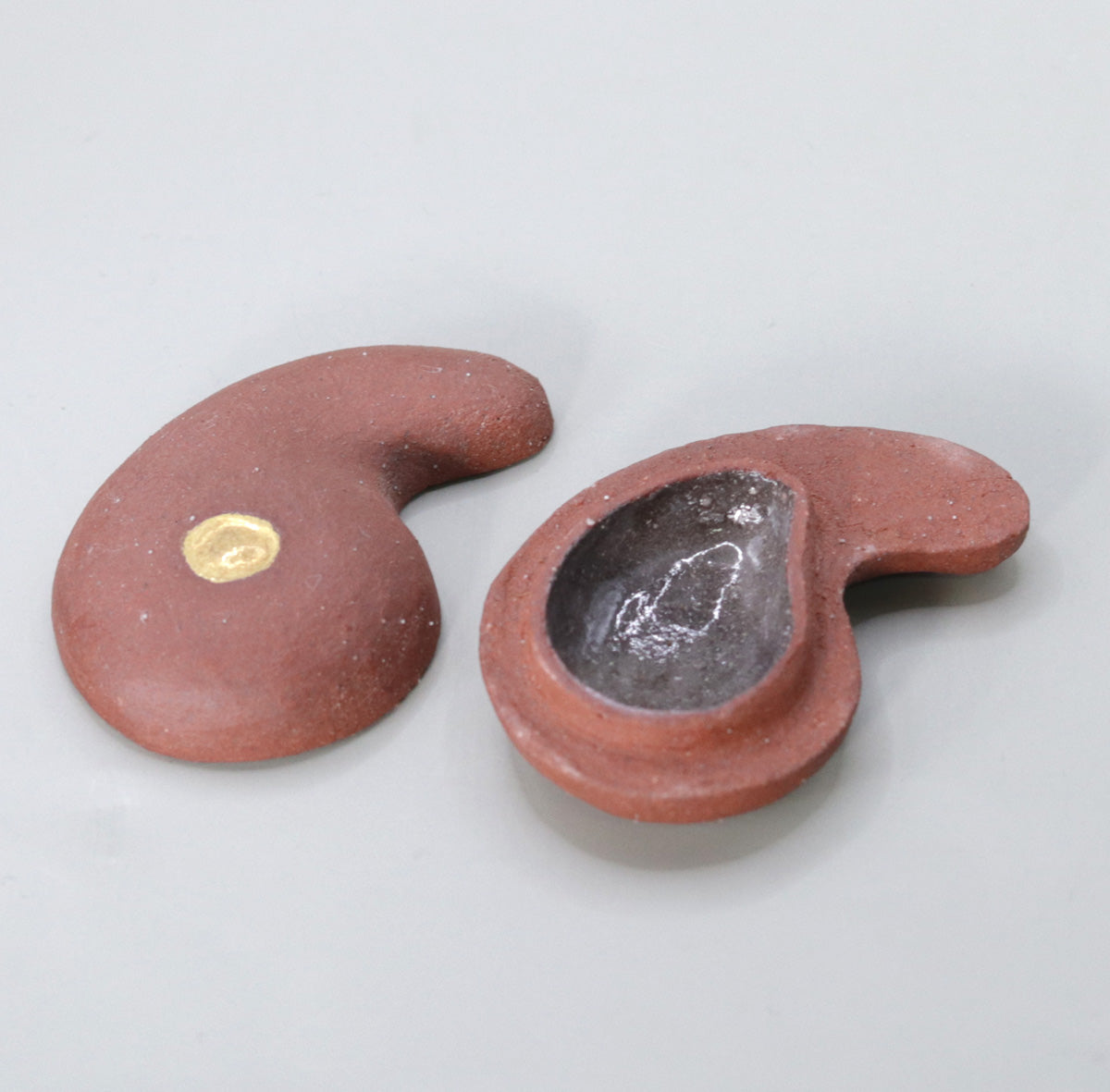Yakushiji Temple East Pagoda Foundation Soil Magatama Lid Rest Byari Rakusai
Yakushiji Temple East Pagoda Foundation Soil Magatama Lid Rest Byari Rakusai
Couldn't load pickup availability
Width: 7.5cm x 5.0cm Height: 2.5cm
Yakushiji Temple East Pagoda Foundation Magatama Lid Rest (Yakushiji Temple East Pagoda Foundation Magatama Lid Rest) Created by Rakusai Onishi
--A "pearl of life" conceived by the earth of 1,300 years, at a spot by the fireplace--
1. Work summary
This piece is a magatama-shaped lid rest carved by Yatsushiro Onishi Rakusai of Akahada ware in Nara from the foundation soil taken during the dismantling and repair (2009–2020) of the East Pagoda of Yakushiji, the head temple of the Hosso sect of Buddhism. Its smooth curves that fit in the palm of your hand and the rough, rough surface of the clay base are reminiscent of ancient earthenware, and a single speck of gold leaf placed on the top adds a glow similar to that of sunlight.
2. Shape and glaze
Shape : An adaptation of the magatama from the Jomon period, this is a practical design with a flat “turned” part that stabilizes the handle of the tea scoop and the kettle lid.
Material feel : By firing without glazing and reduction firing, the iron in the foundation soil develops a reddish-brown color. Quartz grains sparkle here and there, evoking the feeling of the 1,300-year-old strata.
A single piece of gold leaf : This decoration symbolizes the sun (yang), and in contrast to the magatama carrying the moon (yin), it suggests the harmony of yin and yang .
3. The significance of using foundation soil
The East Pagoda of Yakushiji Temple is a three-story pagoda designated as a national treasure and is also known as "frozen music." The soil on which it stands is sacred soil that was tamped by monks and artisans during the Hakuho period to support the central pillar of the pagoda. The clay, which has matured in a moist environment for many years, combines plasticity and iron, and is also known as the "miracle soil," with many famous potters attempting to create works from it.
4. Cultural background of the magatama motif
Magatama flourished from the middle of the Jomon period, and appeared in the Kojiki as one of the three sacred treasures, the Yasakani no Magatama. They symbolize the fetus, the moon, and the soul, and are said to represent rebirth, protection, and harmony . In the tea ceremony, they have been used on lid rests and incense containers as auspicious objects to protect the hearth, the place where life is nurtured.
5. Arrangements at the tea ceremony
| Interest/season | stem/flower | Incense | lingering charm |
|---|---|---|---|
| First furnace (first winter) | Axis “Yin Yang Sympathy”, Flower: Sasanqua | Kara piece | The contrast between the hearth fire and the moon jewel creates the "Yin-Yang combination." |
| Waiting for Spring (Great Cold) | Axis ``fetal movement'', flower: cold plum | Incense stick "Zuiun" | Praying for rebirth through the association of fetuses with magatama |
| Moon Viewing Tea Ceremony | Stem “Tsukihira Fusei”, flower: thin, wisteria hakama | Sandalwood + Borneo | The moon is decorated with a magatama and gold leaf is decorated with the sun, representing the harmony of yin and yang. |
6. Onishi Rakusai's approach to pottery
Following on from his deer, temple bells and shibo, Onishi Rakusai has undertaken the challenge of combining the life-bearing symbols of the magatama with the foundation clay that holds history itself . By eliminating the glaze and highlighting the earthenware, the piece is finished in a way that allows one to fully feel the "breath of the raw earth" created by the firing flames and 1300 years of maturation.
7. Summary
This piece is made from 100% clay from the grounds of Yakushiji Temple, and all impurities have been thoroughly removed, giving it a clear beauty. The clay has been around for ages, and is homogeneous. It takes on a clear luster when fired, and a gentle color like old roofing tiles when fired. Its smooth texture and resistance to warping are also appealing. The story of the clay, which has a history of 1,300 years, gives you a sense of peace every time you pick it up. This is a special piece that combines material, beauty, and spirituality. The Yakushiji East Pagoda Foundation Clay Magatama Lid Rest is a masterpiece that seals the prayers and cycle of life that have continued since ancient times in the quiet red clay and gold glow. Every time you gently hang the ladle and kettle lid, the mystical presence residing in the curves of the magatama will fill the tea room, speaking of eternal time to the host and guests.
A conversation with Rakusai Onishi – High-end pottery specialty store [Amagi-do]
Share


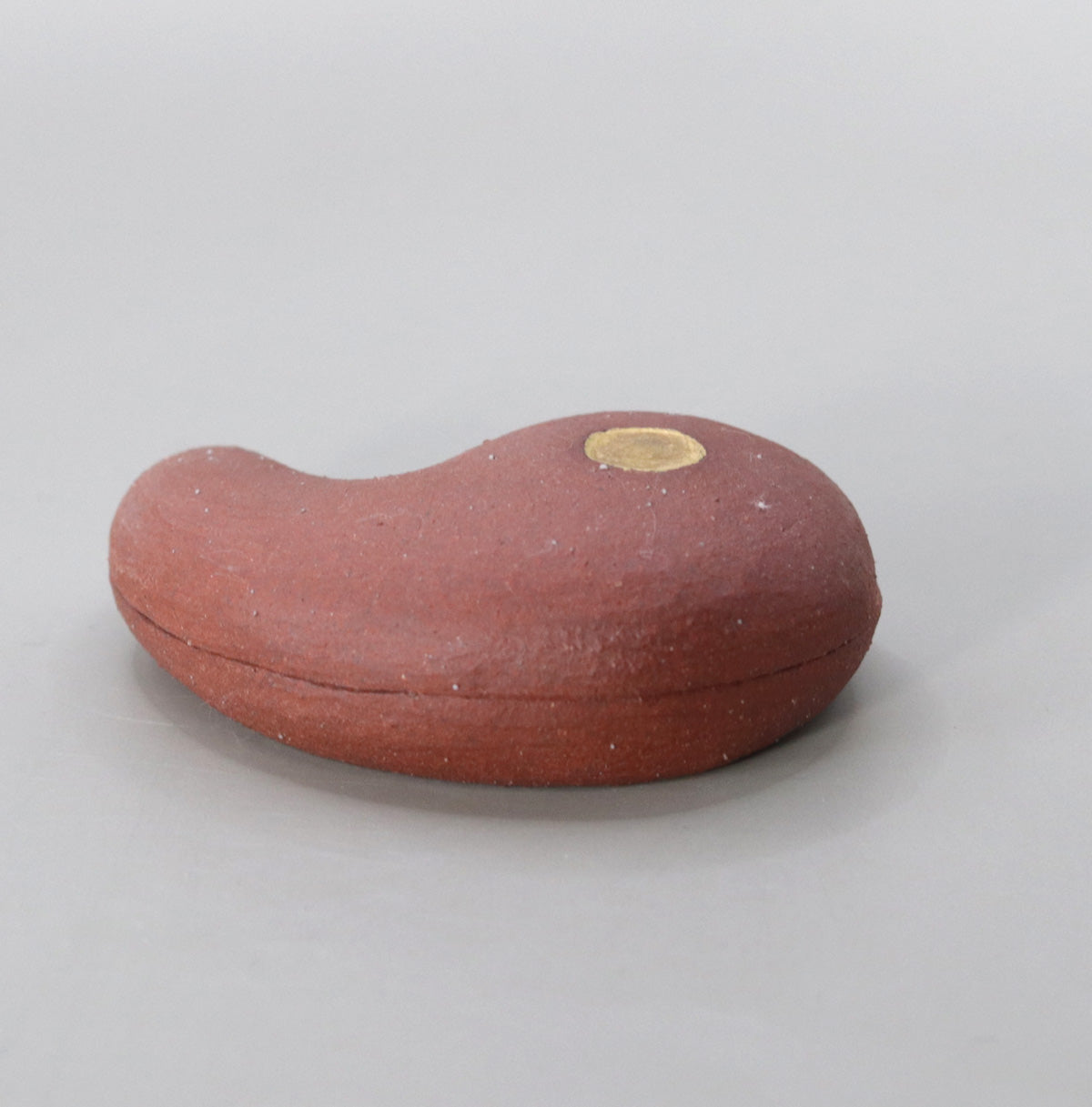

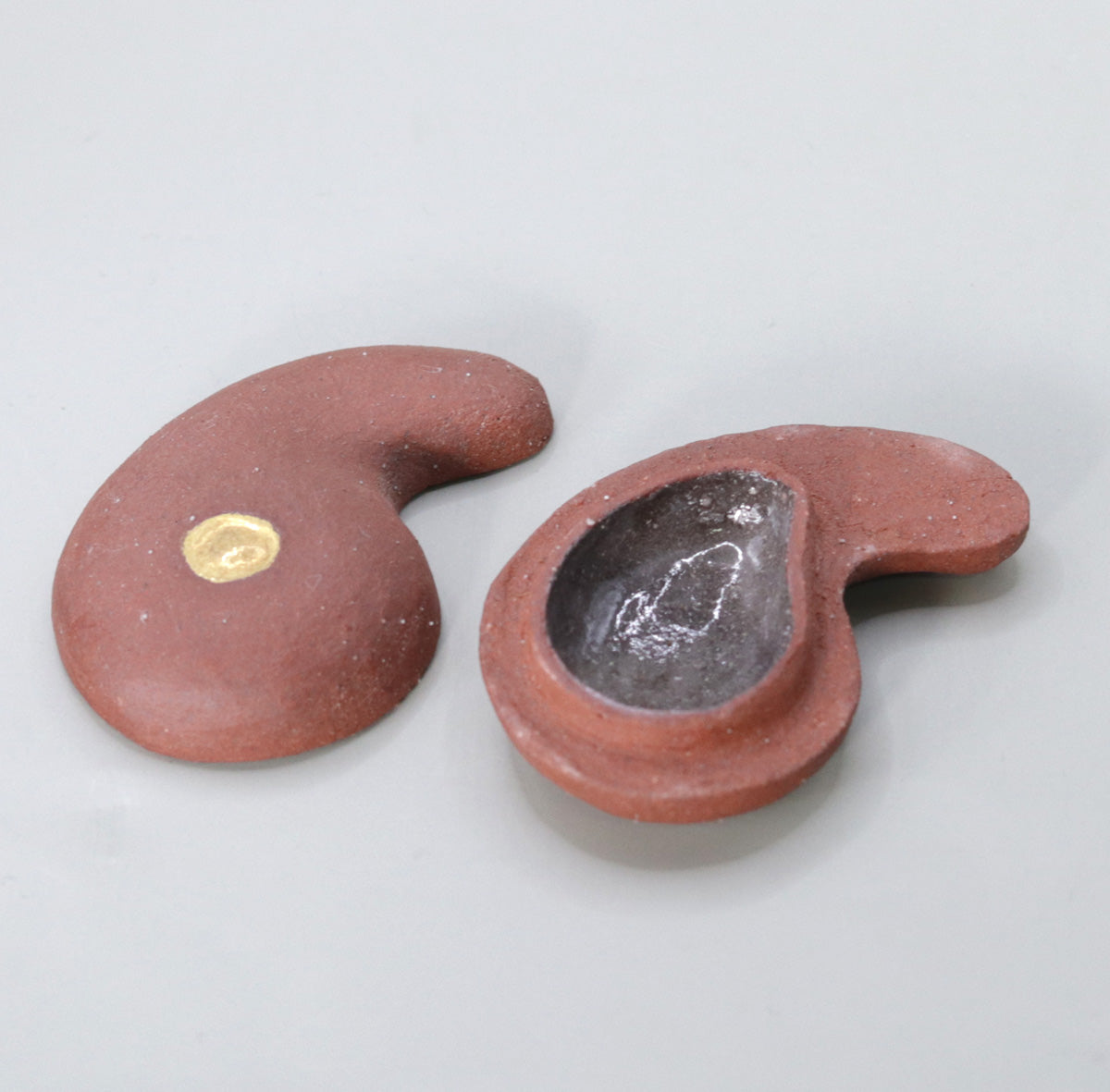
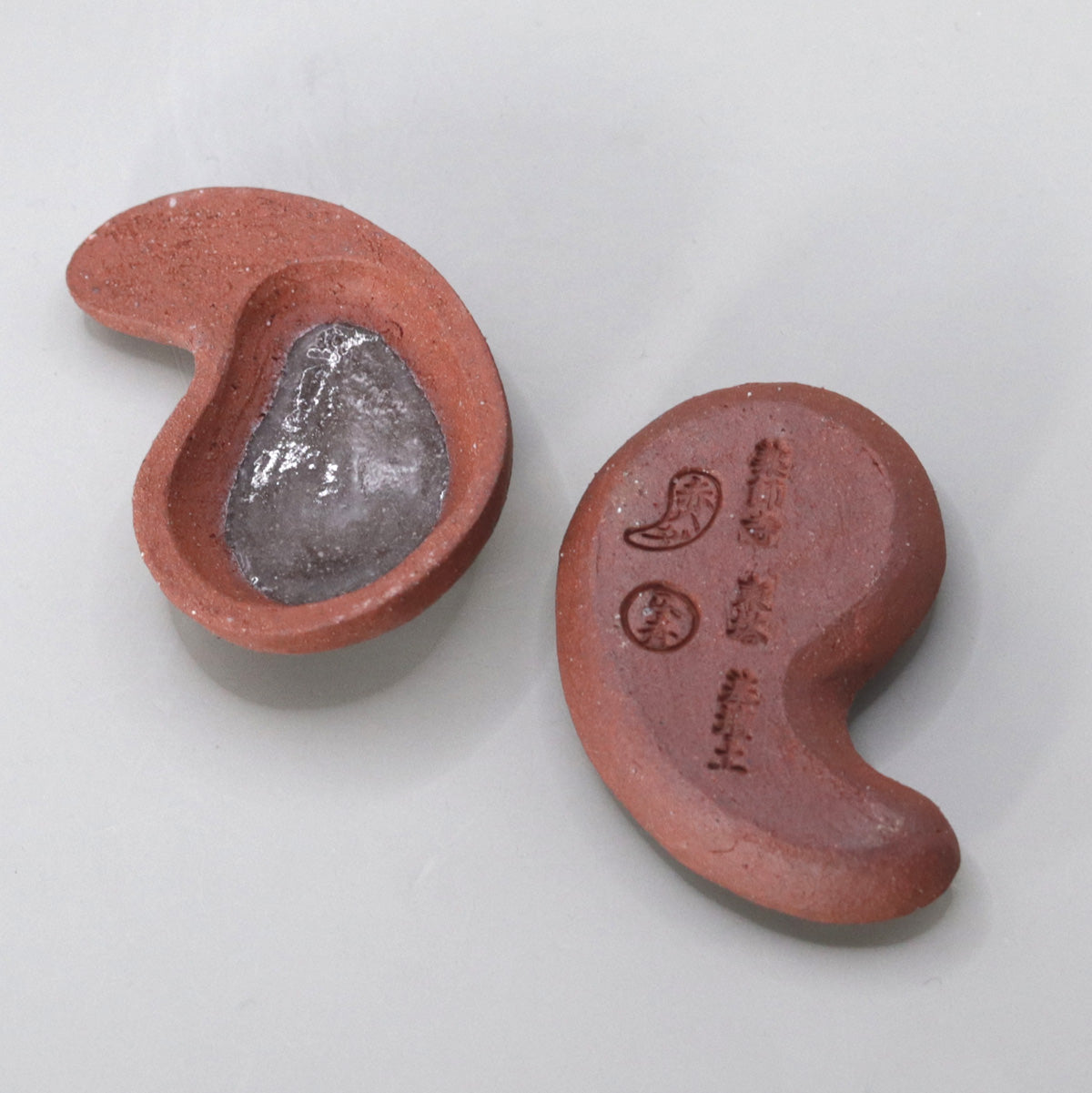
Multi-Column
-
[I will send it to you quickly and carefully]
We carefully package each product in a way that suits it best.
Also, delivery times vary depending on the piece (vessel, etc.).
Items that already come with a box will be shipped within 1-3 days of the order date.
For items that require a box to be made after your order, it will take approximately 30 days for production to be completed and then shipped.
In either case, once we have confirmed your order, we will contact you by email to inform you of the delivery date.
-
[Requests when purchasing pottery]
Even products that look the same may differ slightly in color, shape, size, etc.
The way the glaze is used, the power of the kiln, the firing method, the season, and the humidity also affect the appearance of the pottery.
Please understand the individuality of each piece of pottery and enjoy the unique warmth of handmade.


